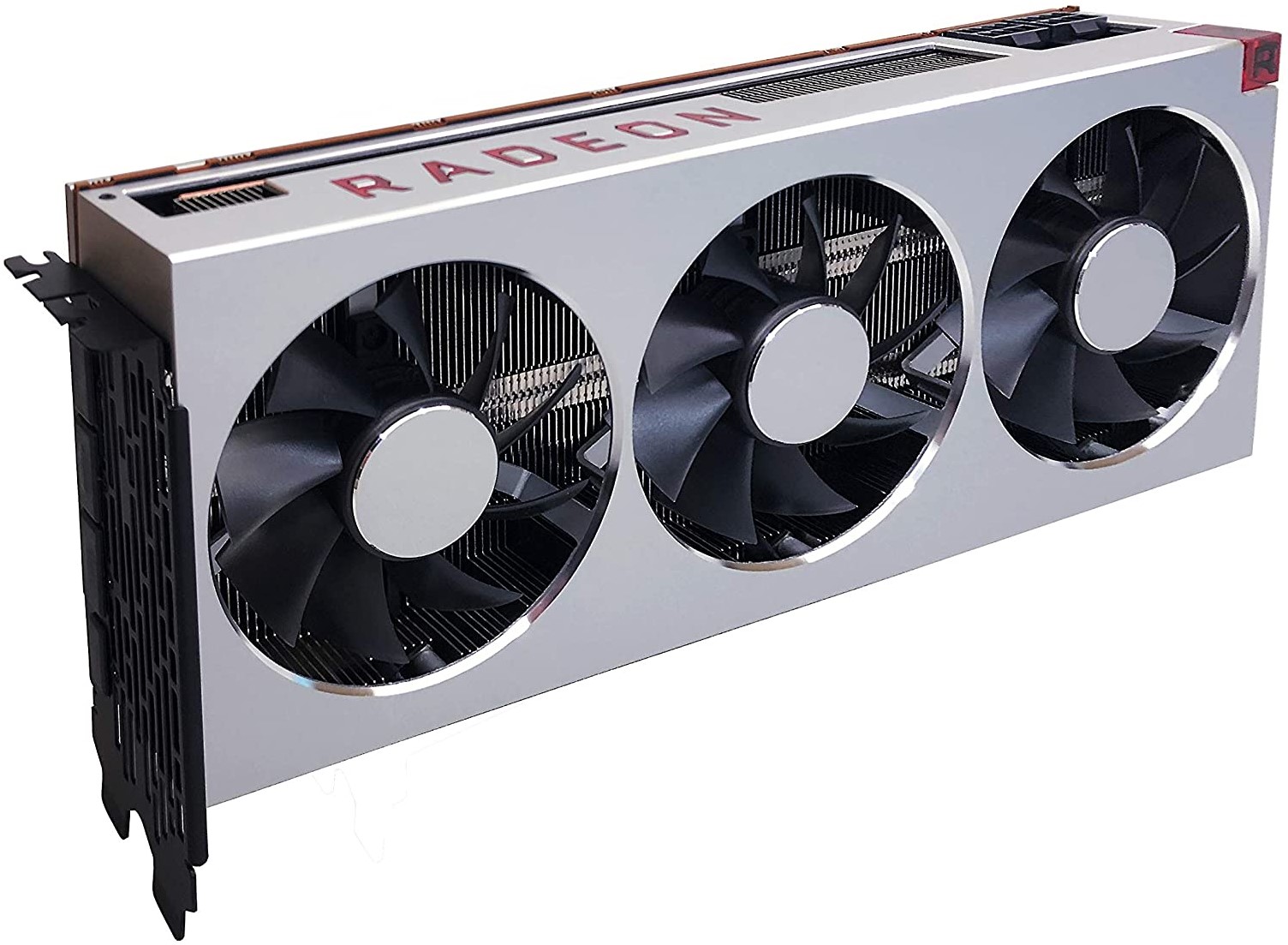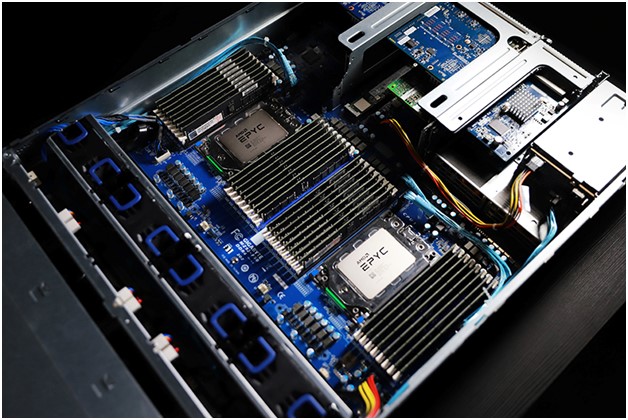Requirements – What do You Need to Start Mining Monero Today?
To start mining any cryptocurrency, you need hardware and software or you can consider joining a mining pool. With these taken care of, access to cheap electricity will see you mine XMR comfortably. In the following subsections, we tell you which hardware and software are best for Monero, as well as recommended mining pools.
Popular Hardware and Mining Rigs for Monero
Unlike with Bitcoin or similar networks, you do not require an ASIC to mine Monero.
To clarify this, note that Bitcoin’s SHA-256 algorithm, or Litecoin‘s Scrypt, supports application-specific integrated circuits. Monero’s CryptoNight consensus algorithm remains ASIC-resistant despite various attempts to introduce one.
So, instead of ASICs, miners on this privacy-focused cryptocurrency network use Central Processing Units (CPUs) and Graphics Processing Units (GPUs). This has made Monero a very attractive coin for beginners or anyone who wants to mine but without having to invest in very expensive hardware.
With this knowledge, you can now go ahead and select the best mining hardware to start mining XMR.
But before you proceed, note the following three very critical factors that should influence your choice of Monero mining hardware.
- Hash rate: You need a powerful rig that gives you the most processing power. The higher, the better.
- Memory: GPUs with higher internal memory are the best, with popular ones boasting 6 GB or more.
- Electricity: You will need to keep the cost of electricity low, otherwise it could mean little to no profit at all.
CPU or GPU?
While you can mine XMR with either, a GPU rig comes on top in terms of power but is more expensive.
Nvidia and AMD are the leading GPU cards for mining, and two of the most popular mining hardware tools for Monero are from these two companies.
The following are three of the best available XMR miners. The first two are GPUs while the third is for CPU mining.
1. GeForce RTX 2080 Ti
GeForce RTX 2080 Ti. Source: Amazon
NVIDIA’s GeForce RTX 2080 Ti offers up to 1450 H/s per graphics card, with 1 GB of GDDR6 memory, and 300W power consumption.
2. XFX AMD Radeon VII

XFX AMD Radeon VII. Source: Amazon
Mine Monero with this AMD Radeon VII super fast graphics card that packs 1700 H/s in hash rate and power consumption of 300W. This efficient GPU works well with the XMR-Stak mining software.
3. AMD EPYC 7742

EPYC 7742. Source: Gigabyte.com
AMD’s EPYC 7742 features 64 CPU cores and boasts over 44,000 H/s of hashing power. It is an efficient device, consuming 225W off the wall. But beware as this is quite pricey, although the quality makes up for all the bucks you’ll pay.
Software
Mining cryptocurrencies also requires that you have the right mining software. This needs to be compatible with your hardware and mining pool. The software will help you connect your hardware to the Monero blockchain and to configure other settings essential to the process.
You can either use desktop software or choose to go for mobile options. Some products offer cross-platform functionality. Note that a desktop version will work from your computer’s desktop, while a mobile version can be accessed anywhere via a mobile device.
While it’s easy to find a suitable software version for your rig, always ensure you check on compatibility. We emphasise this as non-compatibility is as good as just wasting your electricity, with mining rigs running but you won’t be mining at all.
Which software people use to mine Monero
You’ll notice that there are several types of Monero mining software you can choose from, all tailored for CPU and GPU mining.
The most popular Monero mining software used today include:
- CC Miner–You need this if you are using Nvidia GPU cards
- XMR Stak –XMR Stak supports both CPU and GPU hardware
- Monero Spelunker–The best software for CPU mining on the Monero blockchain
Can I Use my Personal Computer to Mine Monero?
Technically, you can use your personal computer to mine Monero because XMR mining supports CPU mining. But this will need to be a high-end computer, like those designed for gaming or an i5 or i7 processor. These can get you mining negligible amounts of XMR.
If you are serious about mining with a CPU, then you might need to tweak your PC into a setup that can mine comfortably for profit.
To get going, pair your PC with a CPU designed to support crypto mining. In most cases, these are Intel Pentium processors, which you can easily get. You could also check out AMD’s Ryzen Threadripper 1950X or Ryzen 7 1800x, among other options in the market.
Once these are sorted, you’ll need to have RAM, a dedicated GPU, motherboard, and a solid-state disk (SSD) to inject speed into the mining rig. With this, you could assemble a powerful mining setup, with your personal computer running Windows, Linux or Mac OS used to boot the system.
To use the CPUs and your PC to mine XMR, you could use Minergate. Once you create an account and download the mining software, follow the guidelines to start smart mining.
Technical Knowledge Required to Mine Monero
Mining can be a complex activity, especially if you are a beginner. Part of the problem comes with the difficulty of grasping key terminologies. Although you are going to get savvy at some point, here is a simple explanation of some of the technical terms related to Monero mining.
- ASIC-resistant: An algorithm that makes it difficult for miners to deploy specially-built ASIC miners. Monero has upgraded several times, revamping its CryptoNight consensus algorithm to keep such hardware off the network.
- Hash rate: This is a measure of how much processing power a mining device has. It relates to the speed of mining i.e. how many hashes per second can the hardware device process?
- Block reward: This is what miners earn after finding a new block and adding it to the blockchain. The reward includes a defined number of new coins and any transaction fees attached by users.
- Mining Difficulty: This looks at how hard it is for a miner to get a new block, with the intention of such a metric being to keep the time used to calculate hashes within the estimated block time. Difficulty readjusts every often to ensure that this is the case, although different blockchain platforms adjust their mining difficulty differently.
- Hard cap: A definite number of coins that can ever be minted or exist as per a blockchain network’s protocol. This is the case with Bitcoin’s fixed supply of 21 million coins. Monero’s is slightly different as new coins will continue to be minted indefinitely but at a fixed rate.
- Tail emission: The new coins Monero miner will generate once the 18.4 million XMR are all mined. The new coins will be created at a rate of 0.3 XMR per minute or 0.6 XMR to go by the 2-minute block time.
Joining a Monero Mining Pool
Before you begin mining Monero, decide whether you are going to solo mine or join a mining pool. As explained earlier, Monero mining uses hardware that might not be as expensive as those for Bitcoin. This means with a sizable capital, you could assemble powerful GPU rigs and try solo mining.
However, you might struggle given mining is fiercely competitive and that you would still be competing against mining pools. Pools allow miners to combine their computing power and to mine as one, and therefore greatly increasing your chances of finding a block and earning a reward.
The reward is shared amongst the miners as per an individual miner’s contributed hash rate. For example, if your hash rate makes up 3% of the pools’ total processing power; you’ll get 3% of the 1.14 XMR given as block reward.
If you increase your contribution, you increase the potential reward ratio. It’s that simple. But note that some pools have joining or pool maintenance fees and that comes from the pool reward.
You also need to do your due diligence when selecting one.
To give you a head start, here is a list of the top Monero mining pools.
- MineXMR.com
- SupportXMR.com
- xmr.nanopool.org
- monero.crypto-pool.fr
Monero cloud mining
You can also look to Monero cloud mining as an alternative if you don’t want to run the mining hardware. Cloud mining allows you to get a mining contract from a cloud service company. The company will rent you computing power from their large data centres, which you can use to mine XMR. Once you pay a fee, you can earn rewards from the mining venture.
Advantages and disadvantages of cloud mining:
Pros
- No need to buy a mining hardware
- You don’t have to monitor mining machines
- You can mine any coin you want
- Regular payouts
Cons
- Contractual terms are fixed (not opting out)
- Risk of disreputable/scam providers
